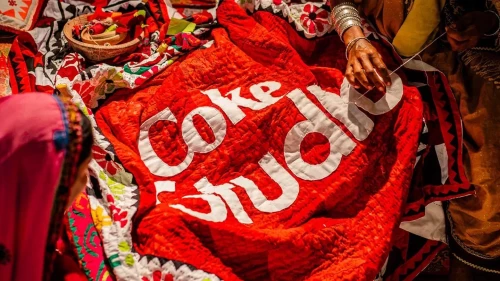
AFTER reports emerged of the illegal demolition of the Sybil D’Abreo House (part of the protected Jufelhurst School complex in Karachi’s Soldier Bazaar), and after strong condemnation from civil society, the entire government machinery (including the Sindh chief minister) sprang into action. Orders for various departmental probes and administrative actions were issued, and the Sindh government approved Rs30 million for the restoration of the 86-year-old complex.
It should be noted, however, that the Jufelhurst incident marks an ongoing pattern. There are reasons to believe that the perpetrators of such actions in Karachi and in Sindh have the tacit backing of political and bureaucratic elites.
The damage done to the Jehangir Kothari Parade and Pavilion, Shri Ratneshwar Mahadev Temple and Bagh Ibn-i-Qasim in 2014 during the construction of the underpasses/flyover in Clifton is one example. A ‘benevolent’ developer, constructing Pakistan’s tallest building in this area, has invested to ease present and future traffic through this infrastructural adjustment. Another example is the periodic demolition of Shikarpur’s historic havelis over the past few years. Clearing the land for new construction, and selling the carved woodwork and antiques, are two core motives behind this unethical activity. It is common knowledge that the supply chain for such items effectively leads to Karachi’s markets, where elites with a penchant for vandalised artefacts proudly display them in their homes.
Sindh’s heritage is being systemically pillaged.
Currently, heritage management is undertaken through the legal and administrative frameworks laid down in the Sindh Cultural Preservation Act, 1994, and the principal agency responsible for this is the Sindh Culture Department. In 1997, a list was drawn up in which 454 properties were notified as protected, but some years later it was realised that a new survey had to be conducted as many buildings were reportedly destroyed.
The Karachi Heritage Re-Survey Project was launched in 2005 with a scientific criterion for listing heritage that was devised and approved by the Sindh Heritage Advisory Committee, a forum constituted by the 1994 law. An extensive survey was conducted by trained professionals to verify the status of already listed buildings as well as to identify and recommend other buildings for heritage status. Based upon their input, the government has added more than 1,200 buildings and sites in Karachi to the list, and the work is still ongoing, given the vast and scattered heritage treasures across the city.
Similar listings have been made elsewhere in the province. But the exercise is challenging due to limited access available to surveyors and logistical difficulties in preparing the inventories. The objective of including buildings in the heritage list is to help protect the structures, extend technical assistance for their preservation and restoration, and enhance their functional and visual utility.
However, property owners generally view this listing as an uncalled for punishment by the government. These structures exist on high value lands with lucrative prospects if and when they are removed and replaced with a high-rise building. Restricting the use of space merely for heritage retention is viewed as being against market trends.
There are many government policies that promote high-density high-rise development in locations where heritage properties exist. The ‘Commercialisation of Roads and Streets Policy’, introduced by the erstwhile city district government of Karachi, allowed the construction of mixed use high-rise buildings on major roads and streets. Initially six streets were notified for this change — the present number is over 40, and quietly increasing. The Sindh High Density Board Act, 2010 enabled the change of density measures for individual plots. Obviously, heritage properties face enormous real estate pressure due to the flexible provisions of this law.
Locations such as I.I. Chundrigar Road may lose many of their prized heritage buildings under this rising tide of high-rise construction. In many cases, new developments completely overshadow the view and precincts of precious historic complexes. A mundane parking plaza and commercial space that is being constructed next to Empress Market shall overshadow the latter’s edifice from public view. Elevated bus rapid transit corridors are likely to eclipse the visual axis to Jinnah’s Mausoleum, perhaps the metropolis’s most significant site.
Safeguarding heritage requires multiple prerequisites, foremost of which is political commitment. It is important that the Sindh government honour heritage sites listed by its own department and create procedures whereby incentives are generated for the property owners. Relaxation in taxation, extension of free technical support in design and restoration, and availability of low mark-up restoration assistance loans are some options.
The writer is chairman, Department of Architecture & Planning, NED University, Karachi.
Published in Dawn, April 23rd, 2017










































